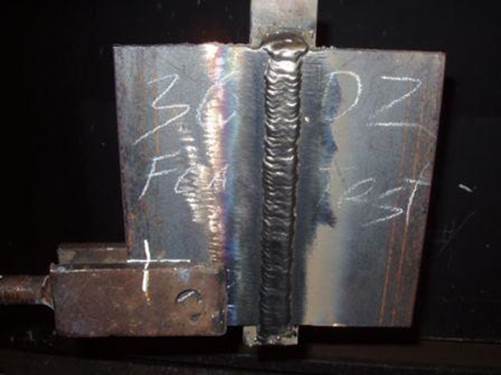supplementary essential variable in welding procedure specification(WPS)
This article provides information about the supplementary essential variable in welding procedure specification(WPS) based on the requirements of ASME Code Section IX. The code defines it as "Supplementary essential variables are conditions in which a change will affect the toughness properties of the joint, heat-affected zone, or base material".
The I4I Academy ASME Section IX Training and API Source Inspector Course covers the supplementary essential variable.

The supplementary essential variable becomes an essential variable when welding procedure qualification requires impact testing. The question is that, why procedure qualification needs impact testing? You can not find the answer in ASME Code Section IX; the answer is in the construction code such as ASME Section VIII. When construction code because of the material, thickness and temperature combination mandates for impact testing in the base material, then the related welding procedure specification (WPS) must be qualified by impact testing (additional to the tension and bend tests).
So, if you have pressure vessel, and it does not require impact testing based on the requirement of ASME Code Section VIII, and then your supplementary essential variable in ASME Code Section IX must be considered nonessential variable. Contrary if your pressure vessel dose needs impact testing, then supplementary essential variable must be considered essential variable.
For instance, you a have pressure vessel with 2 inch thickness and -50 degree Fahrenheit MDMT with SA 516 Gr 60 material. Based on ASME Code Section VIII, the impact testing is mandatory on the plate material at this MDMT, consecutively will be mandatory in the WPS qualification.
You suggest you have this qualified WPS by shielded metal arc welding (SMAW), and you want to use this WPS for another job with the same condition but in different welding position. The changing the position in the SMAW is supplementary essential variable, so you need to revise your WPS and requalify it with mechanical testing.
Consider above example with 10 degrees Fahrenheit MDMT, and then impact test was not a code requirement, and the changing of position would have been a nonessential variable.
Summary: Go back to construction code, if there is a requirement for impact test, then all of your supplementary essential variable in welding procedure specification will be essential variable and if there is no requirement for impact testing all of the supplementary essential variable will be nonessential variables.
Supplementary Essential Variable in Welding Procedure Specification Based on ASME Code Section IX requirements
Normally, base metal group number, thickness out of specified range, filler metal diameter, filler metal classification, position, etc. are categorized on the supplementary essential variables.
The ASME Code Section IX provides a unique table for each welding process and addressing all essential variable, nonessential and supplementary essential variables.
Group number, Group number, T-Limit Impact, AWS Classification, etc are the supplementary essential variables.
The ASME Section IX Training Course is 2 days video training course and available online and the student that successfully pass the exam, receive I4I academy certificate with 16 hours training credit.
Free newsletter!
Sign up to receive my monthly newsletter covering all the latest courses and updates.




New! Comments
Have your say about what you just read! Leave me a comment in the box below.